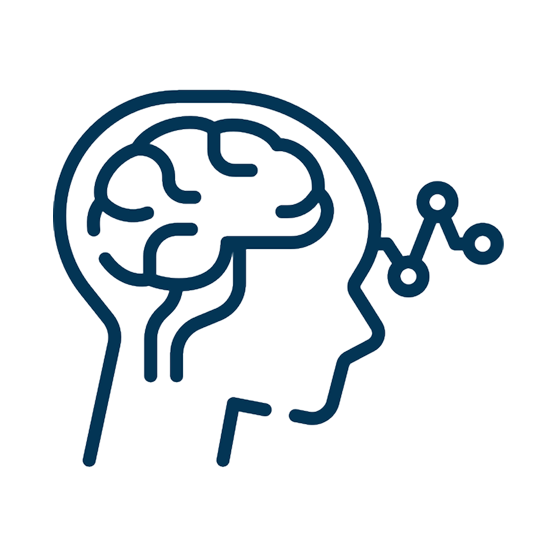For Patients
Resources to help manage pain during cancer treatment
Patient resources
Tools and guides to help you feel more informed and prepared.
Patient Video Guide
A short series exploring cancer pain and strategies for safe, effective pain management.
The Essentials
A guide to Opioids and Cancer Pain
Cancer Pain
Making a plan that works for you
Opioid Safety
What every patient
should know
Glossary
Your quick guide to frequently used terms for discussing opioids and cancer pain.
-
Also known as a painkiller or pain reliever, an analgesic is a medication that helps reduce pain.
Anti-inflammatory analgesics include medications like acetaminophen, aspirin, and non-steroidal anti-inflammatory drugs (NSAIDs) like ibuprofen and naproxen. These work to relieve pain by reducing inflammation or swelling where the pain is occurring. They are often prescribed for mild to moderate pain.
Opioid analgesics, sometimes called narcotics, change the way the brain perceives pain. They work by binding to nerve receptors, blocking pain signals from reaching the brain. Opioids are often prescribed for moderate to severe pain, including cancer pain. Taking opioids carries a higher risk of developing physical dependence or substance use disorder.
-
Breakthrough pain refers to sudden, intense pain that happens even though you’re taking regular pain medicine. Your doctor might prescribe extra medicine, sometimes known as a rescue dose, to manage these episodes.
-
The brain can start to rely on opioids to feel good or even just normal. This can lead to dependence, when the body feels like it needs the drug to function. When someone has a physical dependence on opioids, missing a dose or suddenly stopping can cause withdrawal symptoms like anxiety, sweating, muscle aches, nausea, vomiting, and insomnia.
-
Long-acting opioids may also be labeled as “continuous release (CR)” or “extended release (ER)” medications. These deliver medicine slowly and last longer. Long-acting opioids work over several hours and are taken on a schedule to manage ongoing pain.
-
Naloxone is a medication that may reverse the effects of an opioid overdose. Patients prescribed opioids for pain relief in cancer should have naloxone available at home or on hand and make sure their friends and caregivers know where it is and how to use it. Always call 911 after using naloxone to respond to an emergency. Naloxone is available by prescription or over the counter. It may also be available for free through your local board of health or state health department.
-
Opioids are meant to reduce pain, but sometimes, they can make pain worse instead of better. In opioid-induced hyperalgesia, patients who have used opioids for a long period of time can become even more sensitive to pain. This pain may feel different from the original underlying cancer pain. OIH is not the same as opioid tolerance. If a patient has OIH, taking more opioids makes the pain feel worse. Treatment may include other types of pain management, decreasing the opioid dose, or switching to a different opioid medication. Refer to a pain management specialist where able.
-
If one type of opioid stops working as well as it should, your doctor may “rotate” or switch your prescription to another opioid. This kind of change may help with pain relief and side effects.
-
Opioids can change how the brain works over time and make it harder to control cravings. Opioid Use Disorder (OUD) is a medical condition — diagnosed by a clinical provider using specific criteria — that happens when someone develops a strong need to use opioid pain medications, even when it’s causing problems in their life at work, at home, or in relationships. Patients with OUD may struggle with taking more opioids than they planned. It may feel like they can’t stop taking opioids even if they want to. Anyone experiencing signs of OUD should talk to their doctor about available treatment options.
-
Sometimes cancer pain, or the fear of cancer pain, can become so overwhelming it’s hard to think about anything else. When someone starts catastrophizing, they may feel helpless to stop. This catastrophic thinking can even affect the way people feel pain. It can make it harder to cope with pain, and it can also make pain feel worse. Patients may start to avoid any activity that has any potential to trigger pain, including things that may help like physical therapy or exercise. They may even cut themselves off from friends and family to avoid pain. This can also affect their mood and stress levels, which can also make pain worse/stronger and slow down recovery.
-
Pain interference refers to how much pain affects a person's ability to do everyday activities and enjoy life. It’s not just about the pain itself, but how it gets in the way of things like working, exercising, sleeping, or spending time with loved ones. For example, someone might have pain that feels mild but disrupts their sleep every night. Pain that keeps someone from engaging in social activities can worsen feelings of loneliness or stress, making pain feel even worse. Screening for pain interference helps doctors understand the real-life impact of pain and focus on improving patients’ quality of life.
-
Short-acting opioids may also be labeled as “immediate release (IR)” medications. They work quickly, but they wear off fast. Short-acting opioids are often used to help with sudden, strong pain, also known as “breakthrough pain.”
-
Palliative Care or Supportive Care is a specialized approach to serious illness care. It focuses on managing a patient’s symptoms and treatment-related side effects, improving overall quality of life, and supporting patients and families throughout the course of their care. Working collaboratively with other specialties, expert palliative and supportive care teams assess and address a patient's physical, psychological, emotional, and spiritual well-being.
-
Tapering is the gradual reduction of a medication dose over time, typically under medical supervision, to minimize withdrawal symptoms and avoid potential complications. In the context of opioids, tapering helps the body adjust slowly to lower levels of the medication and can support long-term pain management or discontinuation.
-
Over time, the brain can get used to opioids, and they may no longer relieve pain as well as they did before. As patients develop a higher tolerance, some may feel they need a higher dose of opioids to feel the same relief. Not everyone develops opioid tolerance. For those who do, it may be beneficial to discuss a change in medication or dose with a healthcare provider.
-
Over time, your body may get used to opioids, and you may feel like you need them to feel normal. When someone develops a physical dependence on opioids, missing a dose or suddenly stopping can cause withdrawal symptoms. These can include anxiety, excessive sweating, agitation, nausea, vomiting, irritability, insomnia, and more. If you are concerned about your opioid use, talk to your healthcare team about making a safe tapering plan to avoid withdrawal symptoms.
Frequently asked questions
-
Opioids work by blocking pain signals in the brain. They also activate the parts of the brain associated with pleasure and rewards. Long-term opioid use can affect the way the brain responds to pain and to opioids. Not everyone will develop tolerance, dependence, or addiction to opioids. It is important to discuss individual risk factors with your healthcare provider before starting opioids for pain management.
-
Several things can compound pain, including Opioid-Induced Hyperalgesia and Pain Catastrophizing.
Other factors like stress, poor sleep, depression, lack of movement, or even certain medical conditions can make pain feel more intense. Understanding these influences can help patients and providers take a more complete approach to managing pain.
-
Several factors can increase a person’s risk of an opioid overdose. These include:
Taking opioids with other substances like benzodiazepines (used for anxiety), alcohol, or tobacco, which can dangerously slow breathing or increase sedation.
Having health conditions that affect breathing, such as COPD or sleep apnea, which make it harder for the body to handle the effects of opioids.
Looking for more?
Our favorite materials from other trusted sources, now in one place.
-

Opioids for Cancer Pain
-

Developing a Pain Control Plan
-

Non-Medical Treatments for Cancer Pain
-

Preventing Opioid Use Disorder
-

Counseling, Resources & Support Groups for Patients
-

Connecting Patients to Legal & Financial Resources
-

Where and How to Dispose of Unused Medicines
-

Patient Guides for Cancer by Type
-

Substance Abuse & Mental Health Services
-

VDH REVIVE! Naloxone Education
-

Naloxone Resources
-

Legal and Financial Resources








